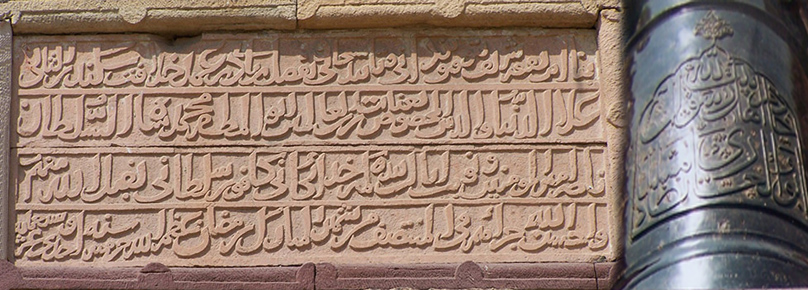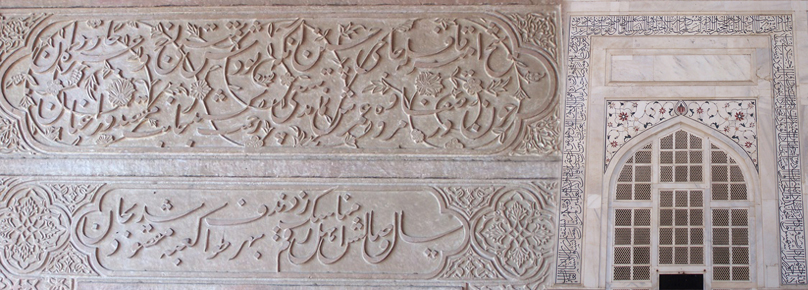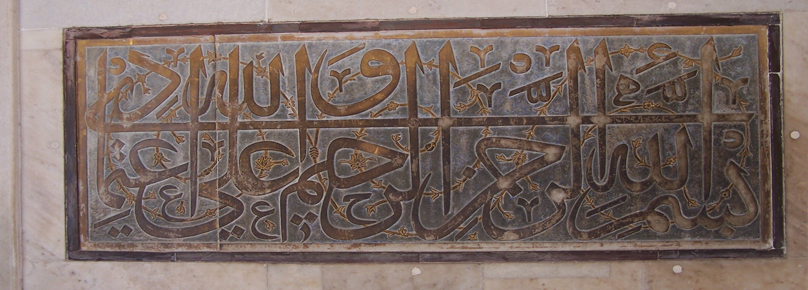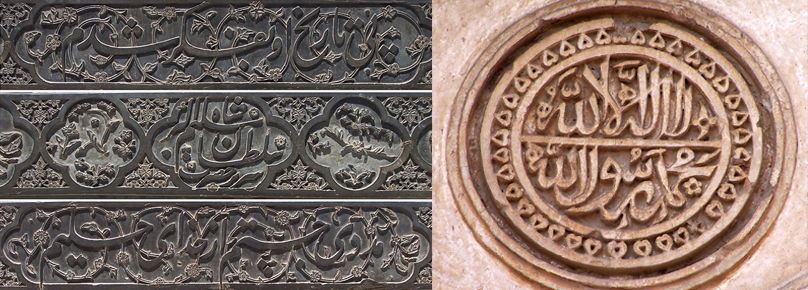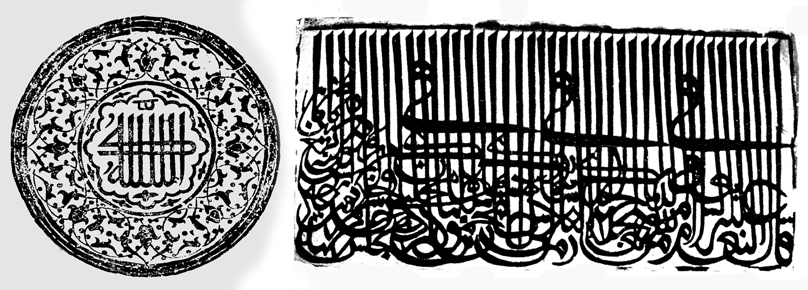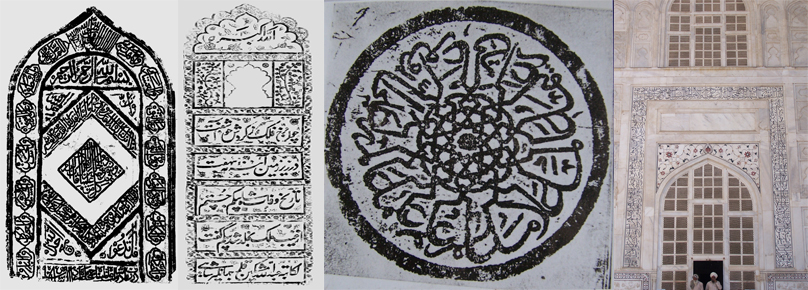 |
 |
|
 |


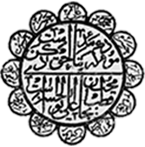

As everybody knows epigraphy is the discipline which deals with the studies on inscriptions, after their correct decipherment and translation. The interpretation of the texts along with their critical examination from the historical and paleographical point of view provides scholars and students with valuable data on the less known or some time unknown features of history.
This epigraphy branch (Arabic and Persian inscriptions ) from different parts of the country and has accessioned, deciphered and listed in the annual reports on indian Epigraphy under a separate Appendix with an exhaustive introduction.
About 2000 Perso-Arabic Inscriptions have been published so far in Epigraphia Indo-Moslemica and Epigraphia Indica - Arabic and persion supplements (EIAPS) from 1907-08 to 1977.
Arabic and Persian Inscriptions (Indian Rulers)/Indian Islamic inscriptions date from the last decade of the 12th century A.D. (to be exact A.H. 587=1192 A.D. when Muhammad Ghori conquered Delhi and established his sultanate there) with the exception of about a dozen or so, bearing earlier dates, found in Haryana, Gujarat and Kerala.
Arabic and Persian epigraphs are usually found on sectarian buildings like mosques and tombs or secular edifices like forts, palaces, gateways, tanks, wells, gardens, bridges, sarais and the likes. Certain movable objects like arms, seals, signets, vases, utensils etc also bear inscriptions.
The epigraphs, being the genuine contemporary records, constitute first-hand source material to authenticate already known events of history at the one hand and provide valuable and definite date on various aspects of history of different regions on the other. These records frequently fill up lacuna of unconfirmed gaps in our knowledge of India's past. They correct wrong statements, supply correct dates of events, corroborate or contradict statements of historians, provide accurate spellings of names and places. They provide data for the local history and political status of a particular region at a given time.
Inscriptions also provide information regarding literary trends in a particular region, inter action among different sections of the society, socio-economic history of a particular country in a particular time bracket. They also furnish data for history of repairs, extension or addition to monuments of various discription.
In Arabic, Persian and lately Urdu inscriptions of India, the prominent dynasties represented are the Mamluks(or popularly called Slaves), Khaljis, Tughluqs, Sayyids, Lodis, Mughals and Surs at the centre, and among the regional dynasties Sultans of Bengal, Gujarat, Kashmir, Malwa and Mysore; Bahmanis of Gulbarga, Sharqis of Jaunpur, Adil Shahis of Bijapur, Nizam Shahis of Ahmadangar, Qutb Shahis of Golconda, Faruqis of Khandesh, Asaf Jahis of Hyderabad, Nawwabs of Arcot, Awadh and Murshidabad, Bhonslas of Nagpur, Gaikwads of Baroda, Holkars of Indore, Marathas of Tanjore, Sindhiyas of Gwalior and the Rohillas.
Arabic, Persian (and lately Urdu inscriptions) are dated in the Hijri era. It is a well known fact that this Islamic era started with the historic event of Migration of Prophet Muhammad from Mecca to Medina in 622 A.D. The word hijrat in Arabic means migration so the era has been named after this very word. The names of the months and week days are of Arabic calendar. In many inscriptions and coins we get dates given also in ragnal years (i.e. year of accession on the throne).
There is no doubt that the language of the epigraphs of the early Sultanate period was Arabic, but majority of the inscriptions are found in Persian in view of the fact that it was the official language of various kingdoms. When mighty Mughals came, they mainly used Persian for all academic and administrative activities, epigraphs, coins, farmans, letters etc. The later Mughals, at the centre witnessed autonomy of many regional principalities who also, under their chiefs, continued Persian as the official language. Later on, when Urdu language appeared on the scene, its existence was also recorded in inscriptions.
Apart from Arabic, Persian and Urdu inscriptions, there are bilingual and trilingual inscriptions i.e. Arabic with regional languages like Gujarati, Bengali, Tamil and Malayalam and Persian with provincial languages like Kannada, Telugu, Oriya, Tamil, Gujarati and Marathi. Arabic and Persian have been used with other languages namely Sanskrit, Hindi, English, Portuguese etc. There are trilingual inscriptions with combination of Arabic & Persian with Urdu or any other language. We get quadrilingual epigraphs also.
Arabic and Persian inscriptions in India, like their counter parts in other countries, are the best known source, depicting the history and evolution of the art of Islamic Calligraphy. Beautifully calligraphed panels and bands constitute the most important decorative element in Indian Islamic Architecture. The best examples of this applied art are Qutb Minar at New Delhi, Adina Mosque at Pandua (Bengal), Atala Masjid at Jaunpur, Jami Mosques at Ahmadabad (Gujarat), Golconda and Hyderabad, Akbar's tomb at Sikandara, Ibrahim Rauda at Bijapur, Taj Mahal at Agra and Jami Masjid at Old Delhi(Shahjahanabad).
Arabic and Persian epigraphs are found executed in different popular scripts or styles of Islamic Calligraphy viz., Kufi, Naskh, Thulth, Riqa and Nastaliq. India can boast of adding a new style to the Islamic Calligraphy in the 14th century, which is known, among the art historians, as Bihar style. The decorative Bengal style is nothing but an addition to the varieties of monumental Thulth style in India.
Since its inception, the Epigraphy Branch at Nagpur has so far copied nearly 15,000 Arabic, Persian and Urdu inscriptions which include unilingual, bilingual, trilingual and quadrilingual inscriptions.


